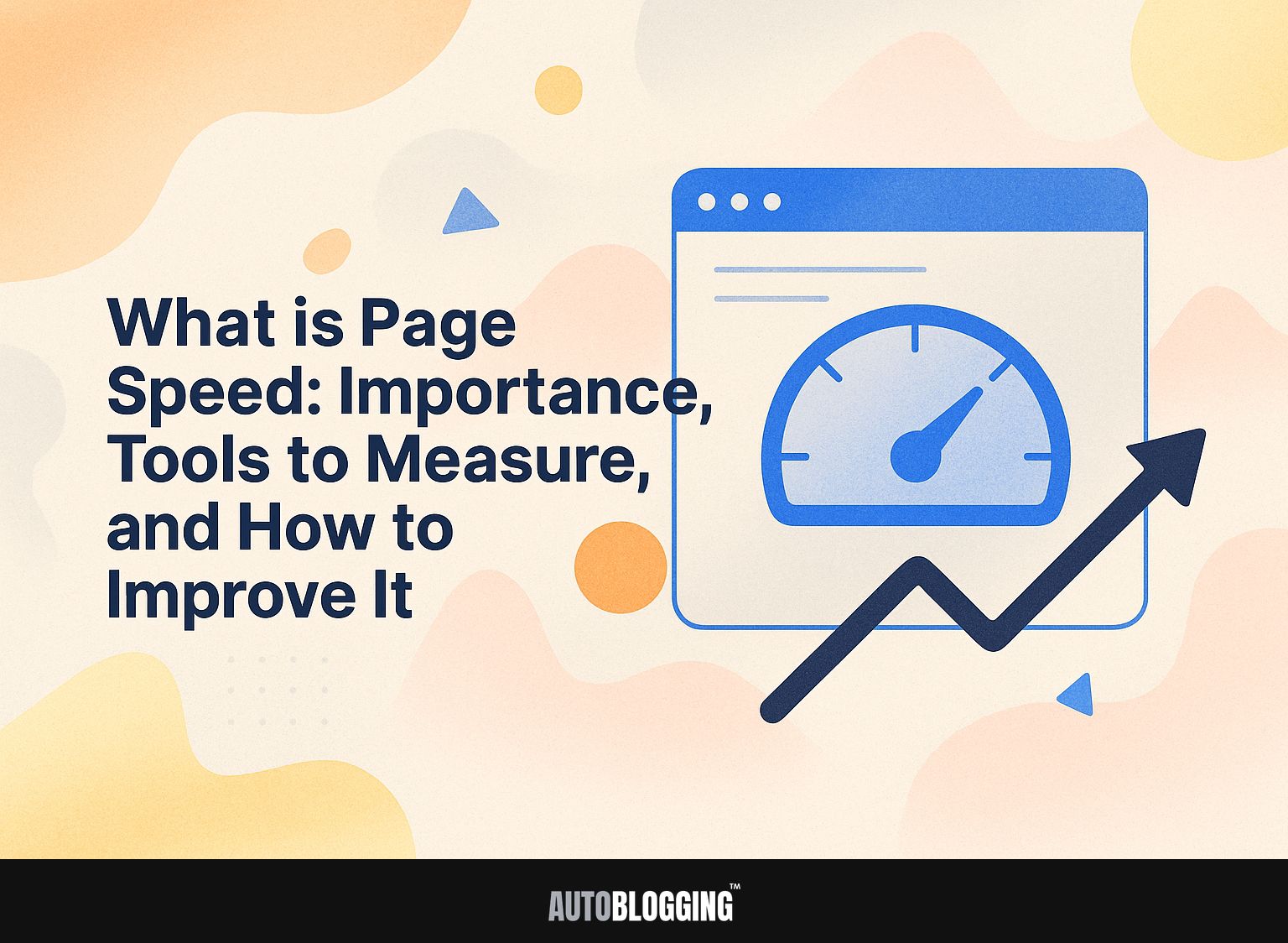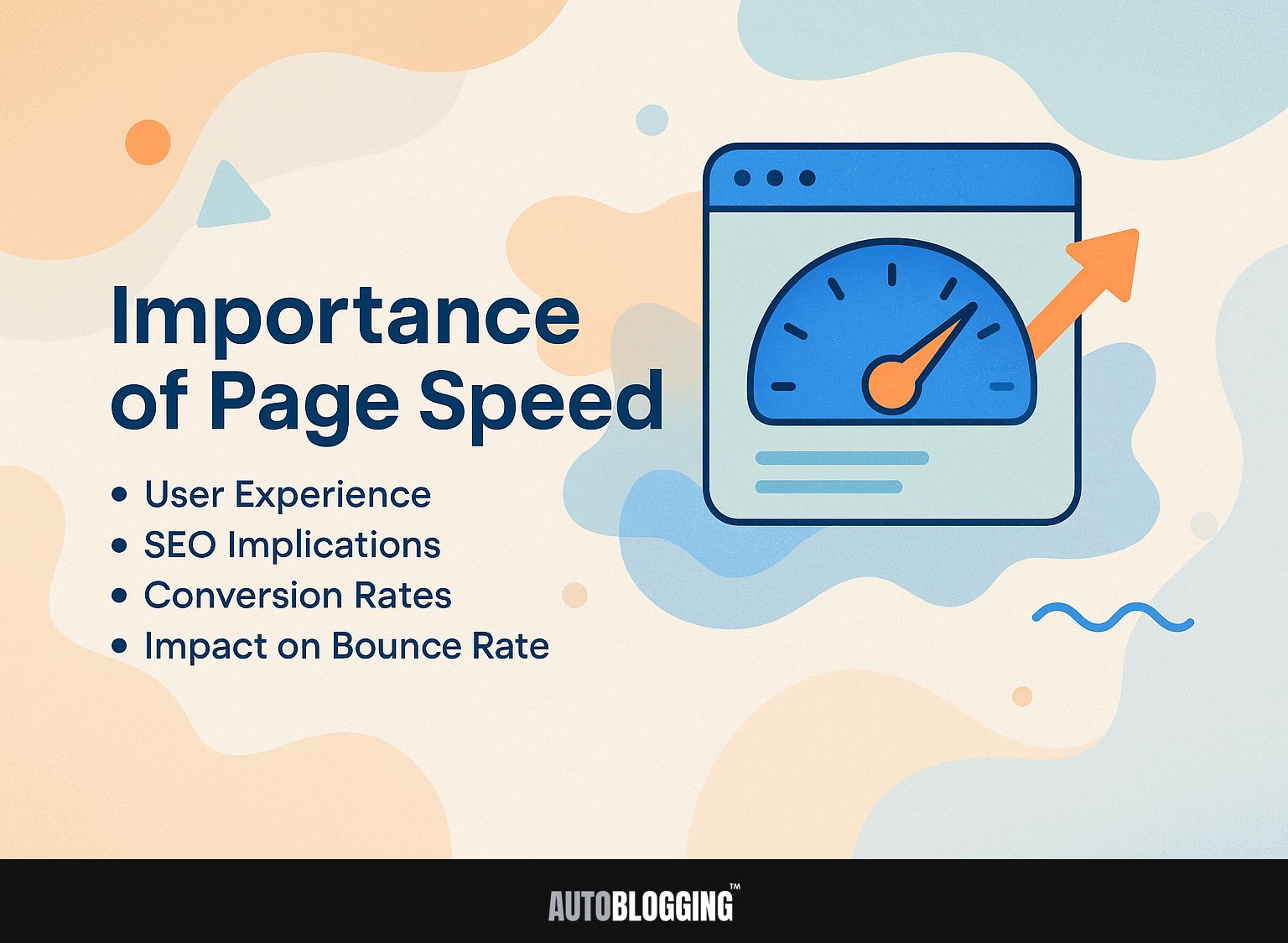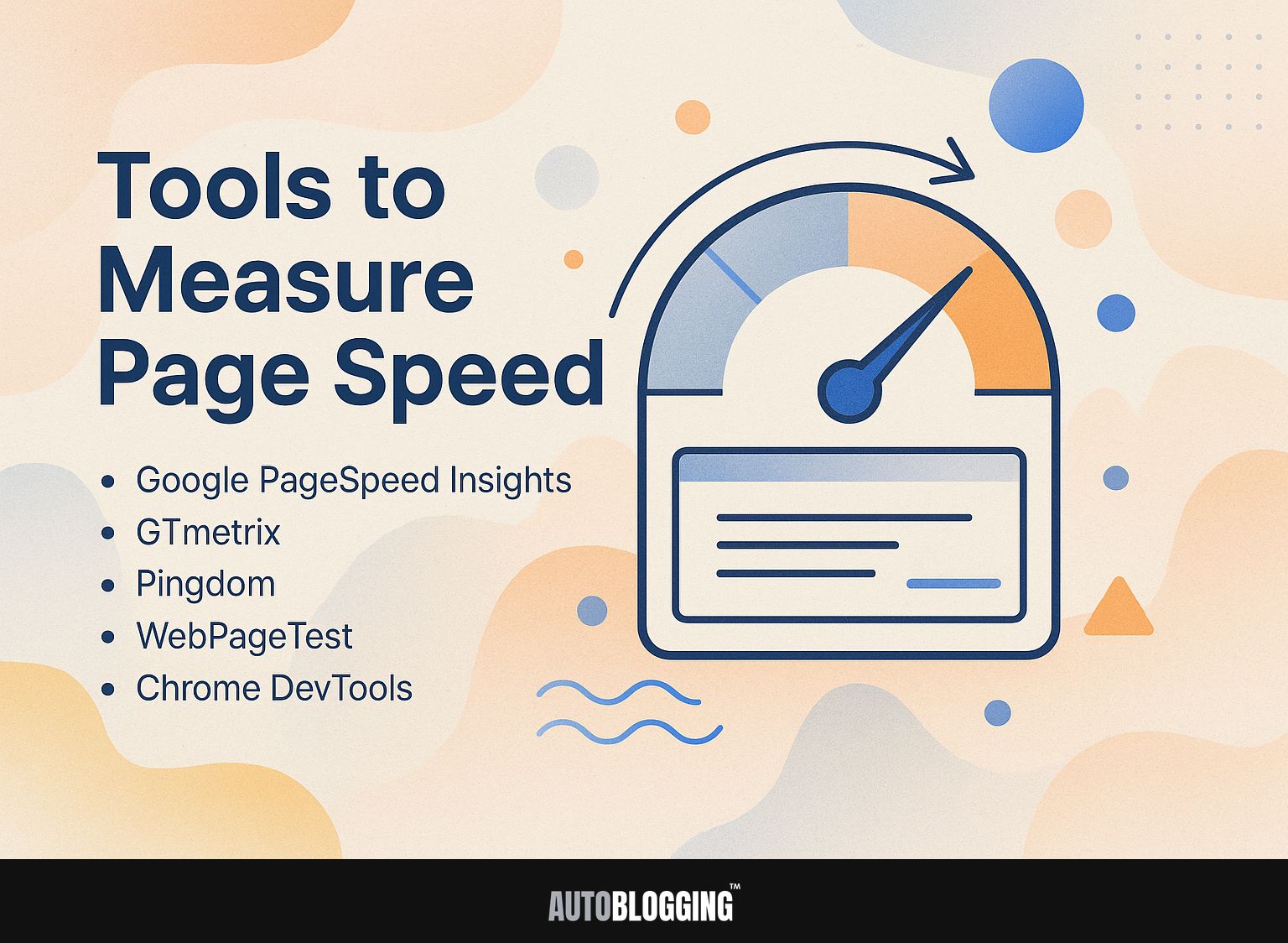
Is your web page struggling with slow load times? Page speed is important for better user experience and higher SEO rankings. You can test how well your website works using Google PageSpeed Insights and GTMetrix. In this article, we will discuss why page speed matters, its impact on how users interact with your site, and practical ways to make your site load faster. Learn how improving page speed can increase conversions and reduce bounce rates!
Key Takeaways:
- Page speed means the time it takes for a web page to load. It is affected by things like the size of images and how quickly the server responds.
- A fast page load time is important for good user experience, improved SEO, more conversions, and fewer people leaving the site quickly.
- Tools like Google PageSpeed Insights, GTmetrix, and Pingdom can check and assess page loading speed.
- To make pages load faster, reduce image size, shrink code, use a CDN, and select a quick web hosting service along with other methods.
Contents
What is Page Speed?
Page speed is how quickly your web page content appears, greatly affecting how happy and involved users are.
1. Definition of Page Speed
Page speed is the amount of time it takes for a webpage to completely show its content to the user, usually measured in seconds. Fast-loading pages are important for keeping users, as slow pages make people leave more quickly.
To make your page load faster, use tools like TinyPNG or Kraken.io to make images smaller while keeping them looking good.
Implementing caching solutions such as WP Super Cache or W3 Total Cache can also significantly decrease load times by storing copies of your site for faster access.
Using a content delivery network (CDN) such as Cloudflare can make it easier to send content quickly to various places around the world.
2. Factors Affecting Page Speed
Many key factors influence page load speed. These include the time it takes for the server to reply, the size of images, and the design of the website.
To improve page speed, concentrate on these factors:
- Server Response Times: Aim for under 200ms. Use tools like Google PageSpeed Insights to identify parts of your website that load slowly.
- Image Formats: Convert images to WebP for smaller file sizes without sacrificing quality-this can reduce load times by up to 30%.
- Content Delivery Networks (CDNs): Implement a CDN like Cloudflare to distribute content across various global servers, significantly improving access speeds.
By focusing on these aspects, you can make your website work better and provide a better experience for users.
Importance of Page Speed
Knowing why page speed matters is important because it affects how users interact with a site, where it appears in search results, and how well it converts visitors into customers. For an extensive analysis of this trend, our comprehensive study on SEO best practices examines the intricacies of crawling and its impact on page performance.

1. User Experience
Faster loading times make users happier with the website, increasing the chances they’ll stay longer and come back.
For example, a mere 1-second delay in load time can decrease conversions by 7%. Use tools like Google PageSpeed Insights to identify issues that make your website slow.
Implementing image compression using TinyPNG can dramatically reduce file sizes without sacrificing quality. Using a Content Delivery Network (CDN) like Cloudflare can make your website load faster by storing copies of your content in different locations around the world.
When these methods were applied, companies such as Walmart experienced a 2% increase in sales for every second they reduced website loading time, demonstrating the clear advantages of speeding up websites.
2. SEO Implications
Page speed is a critical SEO factor, with search engines like Google prioritizing fast-loading pages in their ranking algorithms.
A fast page speed improves user experience and can directly increase organic traffic. Use tools like Google PageSpeed Insights to check how well your site performs in terms of loading speed, how users interact with it, and how stable it looks when displayed.
For instance, Cora’s analysis revealed that sites with load times exceeding three seconds experienced significant drops in organic traffic. To improve speed, consider implementing methods such as:
- Image compression
- Browser caching
- Minimizing JavaScript
These steps increase speed and improve site rankings.
3. Conversion Rates
Faster loading speeds can greatly increase sales, especially for online stores, where quick access is essential. A case study from an ecommerce site revealed that a mere 0.1 second improvement in load time led to an 8-10% increase in conversions.
To do this, concentrate on reducing image sizes, using browser storage, and cutting down JavaScript. Tools like Google PageSpeed Insights can show areas to make your site better, and CDNs like Cloudflare can make your content load faster.
Check your website’s performance regularly to continue improving it, because customers are becoming less patient-every small delay can hurt sales.
4. Impact on Bounce Rate
A slow-loading page dramatically increases bounce rates, as users abandon sites that fail to load quickly.
Statistics reveal that 32% of users will leave a page if it takes longer than 3 seconds to load. To address this, reduce image sizes using tools such as TinyPNG or ImageOptim to compress files while keeping the original quality.
Use a Content Delivery Network (CDN) like Cloudflare to spread content quickly. Implement browser caching and minimize HTTP requests by reducing the number of scripts and plugins on your site.
Check Google PageSpeed Insights regularly to find out which areas of your website load slowly. These steps can greatly improve loading speed and keep users engaged.
Tools to Measure Page Speed
Using the right tools to check page speed is important for finding areas that need work and improving performance, including the optimization of landing pages. As mentioned in our guide on landing page optimization tips, efficient page speed is crucial for a seamless user experience.

1. Google PageSpeed Insights
Google PageSpeed Insights gives straightforward ratings on how your website performs on mobile devices and computers.
The scoring system ranges from 0 to 100, with scores above 90 indicating excellent performance, while 50-90 suggests room for improvement.
To improve your score, concentrate on key suggestions such as:
- Minimizing render-blocking resources
- Optimizing images
- Leveraging browser caching
For example, using tools like ImageOptim can reduce image file sizes without affecting their quality, and setting up a Content Delivery Network (CDN) like Cloudflare can make websites load much faster.
Regularly monitor your score to track improvements and adjust optimization strategies as necessary.
2. GTmetrix
GTmetrix offers detailed information on how fast pages load and how well they perform, pointing out problems and suggesting ways to fix them. To begin improving your site, type your URL into GTmetrix and click ‘Test your site.’
Once the report is generated, focus on two key metrics: the ‘PageSpeed Score’ and the ‘Waterfall Chart.’ The PageSpeed Score rates your site’s performance, while the Waterfall Chart visualizes loading times for various elements, helping you identify bottlenecks.
Use this information to prioritize repairs; for example, think about compressing images or using browser caching based on the particular suggestions. Regularly testing your site can make it load faster and improve how users interact with it.
3. Pingdom
Pingdom lets users check how fast their website loads from different places, showing details about loading speed and any problems with performance.
To use Pingdom effectively, start by selecting a test location that reflects your target audience’s geographic area.
After initiating the test, you’ll receive a performance grade based on load times, page size, and the number of requests made. A typical report highlights key metrics, like the time to first byte and fully loaded time, helping you identify bottlenecks.
Use this data to improve image quality or decrease server response times, providing a quicker experience for users. Regular testing can show performance trends over time, enabling proactive improvements.
4. WebPageTest
WebPageTest is a detailed tool for checking how well web pages work, including choices for browser type and internet speed.
To set up a test, visit WebPageTest and enter your URL. Choose the desired browser and connection settings-such as 3G or cable.
After initiating the test, focus on key metrics like ‘Time to First Byte’ (TTFB), which indicates server responsiveness, and ‘Fully Loaded Time,’ reflecting how long it takes for the page’s content to fully render.
For practical usage, a TTFB under 200ms is ideal for ensuring a fast user experience, while analyzing the loading time can help you identify bottlenecks for optimization.
5. Chrome DevTools
Chrome DevTools provides developers with an array of tools to diagnose and improve web performance directly within the browser.
To start performance testing, open DevTools by pressing F12 or by right-clicking and choosing ‘Inspect’. Then go to the ‘Network’ tab. Here, you can track all network requests, check load times, and find large resources that need improvement. Next, switch to the ‘Performance’ tab and record a session to visualize frame rates and CPU activity over time.
Look for long tasks (over 50ms) and excessive scripting, which often indicate bottlenecks. Use these details to handle assets better, reduce file sizes, or take advantage of lazy loading for images.
How to Improve Page Speed
Improving website speed requires various techniques to fix specific problems that reduce performance. One effective method is optimizing images, as it can significantly enhance loading times. Image optimization significantly impacts page load speed (our technical guide to image compression explores advanced techniques).

1. Optimize Images
Reducing the size of images is very important because large, uncompressed images can make up to 80% of the time it takes for a page to load.
To make pages load faster, try changing images to the WebP format. This can make files much smaller while keeping them clear.
Use tools like TinyPNG for compression; this can decrease file size by up to 70%. For example, an image reduced from 1MB to 300KB can improve loading times dramatically, from 5 seconds to around 1.5 seconds.
Use lazy loading so images load only when they appear on the screen, improving speed and how users interact with the site.
2. Minify CSS, JavaScript, and HTML
Minifying CSS, JavaScript, and HTML can significantly reduce the file sizes, leading to faster loading times and improved performance metrics.
Tools like UglifyJS for JavaScript and CSSNano for CSS can make your web assets more efficient. For example, UglifyJS can reduce a JavaScript file by up to 50%, which translates to lower bandwidth usage and faster execution times.
CSSNano often achieves similar results for CSS files. By applying these reductions, a site with initially 500KB of combined assets might see loading times decrease from 3 seconds to 1.5 seconds, improving user experience and SEO rankings.
Reducing the size of these files when you use them in your system helps improve performance.
3. Leverage Browser Caching
Storing often-used resources locally in the browser helps returning visitors load pages faster. To implement caching effectively, use tools like W3 Total Cache or WP Super Cache.
For W3 Total Cache, go to the settings and turn on Page Cache and Browser Cache. This feature keeps unchanged files, speeding up page loading later.
Set cache control headers by adding rules to your.htaccess file, such as ‘ExpiresActive On’ followed by determining expiry times for different file types.
Analytics show that a good caching strategy can improve load times by 50%, enhancing user experience and SEO rankings significantly.
4. Reduce Server Response Time
Reducing server response time is essential for improving overall page speed, ideally keeping it under 200 milliseconds.
- To achieve this, begin by improving your web server settings. Use Google PageSpeed Insights to identify scripts or plugins that slow down your site.
- Consider switching to a high-performance hosting provider like SiteGround or DigitalOcean, which can significantly reduce latency; users often report response times under 100 milliseconds.
- Implement caching methods, such as using a CDN like Cloudflare, which can decrease load times by serving content from edge locations closer to users.
- Compress files and enable GZIP to minimize data transfer time.
5. Use a Content Delivery Network (CDN)
Implementing a Content Delivery Network (CDN) distributes your site’s content across various locations, reducing load times for users worldwide.
Two popular CDNs, Cloudflare and Edgemesh, offer distinct advantages. Cloudflare is user-friendly, with a simple setup that takes just a few minutes and includes free and paid plans based on your needs.
Edgemesh helps online stores by speeding up image loading and analyzing user behavior. Studies show that using a CDN can make loading times 50-70% faster, which greatly increases user interaction and improves SEO rankings. Pick Cloudflare for easy setup or Edgemesh for detailed information and e-commerce tools.
6. Implement Lazy Loading
Lazy loading defers the loading of non-essential resources until they are needed, improving initial page loading speeds.
Implementing lazy loading can be easily achieved with plugins such as a3 Lazy Load and Lazy Load by WP Rocket. For example, a3 Lazy Load is user-friendly and can be configured in minutes, resulting in a 30% improvement in page load times.
Before implementation, an average page might load in 3 seconds; after applying lazy loading, this can drop to around 2 seconds. Tools like [Google PageSpeed Insights](https://developers.google.com/speed/pagespeed/insights/) can track these updates, making the user experience better and boosting SEO rankings.
7. Choose a Fast Web Hosting Service
Selecting a fast web hosting service is fundamental for ensuring optimal server response times and overall site performance.
Hosting companies such as Bluehost, SiteGround, and HostGator have plans that fit different requirements.
For instance, Bluehost’s Basic plan starts at $2.95/month, includes free SSL, and is known for its 99.9% uptime. SiteGround, starting at $3.99/month, is recognized for excellent customer support and managed WordPress hosting.
HostGator offers a Hatchling plan at $2.75/month, which is great for single domain hosting with unlimited bandwidth. Find options like SSD storage, reliable uptime, and helpful customer service to make sure you pick the right plan.
8. Reduce Redirects
Cutting down on extra redirects can speed up page loading and make the site better for users. Redirects can add 100-500 milliseconds to load times, leading to higher bounce rates and lower search rankings.
To minimize these delays, start by auditing your current redirects using tools like Screaming Frog or Google Search Console.
Identify any chains or loops, then simplify them by linking directly to the final page. For instance, changing a link from ‘example.com/old-page’ to ‘example.com/new-page’ can internalize your traffic flow and improve loading speed.
Record the current load time before making changes, and check it again after to see the difference.
9. Summary of Key Points
In summary, important ways to make your page load faster are to compress images, reduce code size, and use content delivery networks. To make images smaller without losing their quality, use tools like TinyPNG or ImageOptim.
To reduce the size of your code, try using plugins such as Autoptimize or WP Rocket. These tools remove extra spaces and comments from your CSS and JavaScript files.
Using a Content Delivery Network (CDN) like Cloudflare can significantly improve load times by storing content nearer to your users.
By applying these strategies in stages, you can greatly improve your website’s effectiveness and the experience for users.
Frequently Asked Questions
1. What is Page Speed and Why is it Important?
Page speed is the time it takes for a webpage to fully appear on your screen. It is important because it affects user experience and can impact a website’s search engine ranking. Slow page speed can lead to higher bounce rates and lower conversion rates, while fast page speed can improve user engagement and increase conversions.
2. What Tools can I Use to Measure Page Speed?
Some tools for checking how fast a webpage loads are [Google’s PageSpeed Insights](https://developers.google.com/speed/pagespeed/insights/), [GTmetrix](https://gtmetrix.com/), and [Pingdom](https://www.pingdom.com/). These tools analyze various aspects of a webpage, such as load time, page size, and number of requests, and provide suggestions for improvement.
3. How Does Page Speed Affect SEO?
Page speed is a factor in Google’s search ranking algorithm. A slow loading webpage can negatively impact a website’s search engine ranking, as Google prioritizes fast and user-friendly websites. Therefore, making a website load faster can help its SEO and make it easier to find in search results.
4. What are Some Tips for Improving Page Speed?
Some tips for making pages load faster include making images smaller, cutting down on HTTP requests, enabling browser caching, and making server responses quicker. Using a content delivery network (CDN) and compressing files can help make pages load faster.
5. How do Different Devices and Browsers Affect Page Speed?
Page speed can vary depending on the device and browser being used. For example, a webpage may load faster on a desktop computer than on a mobile device. Different browsers may also have different load times. Test how fast the page loads on different devices and browsers to provide a good experience for everyone.
6. Can Third-Party Scripts Impact Page Speed?
Yes, third-party scripts such as advertising, social media, and analytics can impact page speed. These scripts can add extra requests and slow down a webpage’s load time. Regularly check and reduce third-party scripts to improve page speed.
